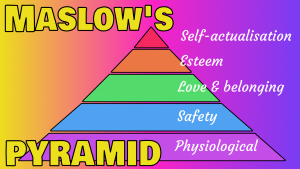Are you a game designer looking to create an engaging and satisfying gaming experience for your players? Look no further than flow theory. Developed by Mihaly Csikszentmihalyi, flow theory can help game designers understand how to keep players engaged and fully absorbed in their game. In this post, we’ll discuss flow theory and how to apply it to your game design.
What is Flow Theory?
Flow theory is the idea that people enter a state of “flow” when they are fully engaged and challenged by an activity. This state of flow is characterized by a sense of effortless concentration, where the player is completely absorbed in the game. According to flow theory, the key to achieving this state is to find the right balance between skill and challenge.
The Balance Between Skill and Challenge
The balance between skill and challenge is one of the key components of flow theory. If the challenge of the game is higher than the player’s skill level, the player will experience feelings of worry and frustration. On the other hand, if the challenge is lower than the player’s skill level, the player will experience feelings of apathy and boredom.
To keep players in a state of flow, it’s important to match the skill level of the player with the challenge level of the game. This means that the game should be challenging enough to keep the player engaged, but not so difficult that it causes feelings of frustration. When the balance of skill and challenge is matched, the player is more likely to enter a state of flow and fully engage with the game.
Tools for Creating Flow
To keep players in a state of flow, game designers can use a variety of tools. One of the most important is providing clear goals. Players should know what they’re trying to achieve and how to achieve it. Additionally, designers should give immediate feedback so that players know how they’re doing and what they need to do to improve.
Another tool for creating flow is adjusting the difficulty level to match the player’s skill level. As players become more skilled, the game should become more challenging to keep them engaged. Designers can also use techniques such as progressive difficulty and variable rewards to keep the player engaged.
Benefits of Flow
When players are in a state of flow, they are more likely to be engaged in the game. This can help with onboarding new players, creating habits, and achieving mastery. When players are fully engaged, they are more likely to pay attention to the game, learn and retain information, and practice the skills required to master the game.
Conclusion
Understanding flow theory and how to apply it to your game design can help players have a more enjoyable and satisfying experience. By keeping the balance of skill and challenge in mind and using tools to keep players in a state of flow, designers can create a game that players will be fully immersed in. Whether you’re designing a mobile app, a console game, or a board game, understanding flow theory can help you create a more engaging and satisfying experience for your players.



